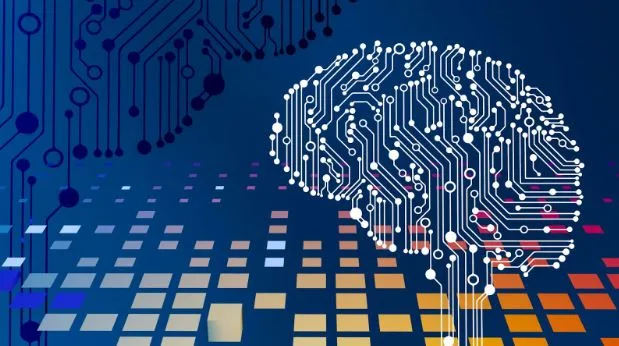Artificial Intelligence: The Silent Revolution Supercharging In-Store Performance
In an era dominated by e-commerce headlines, a quiet revolution is transforming the physical retail landscape. Far from being a relic of the past, brick-and-mortar stores are fighting back with a powerful new ally: Artificial Intelligence (AI). No longer a futuristic concept, AI is now a practical, actionable tool that is fundamentally reshaping store operations, enhancing customer experiences, and driving significant gains in profitability. For retailers looking to improve store performance, integrating AI is no longer an option but a critical necessity.
The core strength of in-store retail has always been its tangibility—the ability to see, touch, and try products, coupled with human interaction. AI doesn’t replace this; it amplifies it. By harnessing the power of data from cameras, sensors, and POS systems, AI provides a layer of intelligence that empowers retailers to make smarter decisions in real-time.
Optimizing the Most Valuable Asset: Inventory
One of the most immediate and impactful applications of AI is in inventory management. Stockouts and overstocks have plagued retailers for decades, leading to lost sales and wasted capital. AI-powered systems solve this with predictive analytics.
- Demand Forecasting: By analyzing historical sales data, seasonality, local events, and even weather patterns, AI can predict future demand with remarkable accuracy. This allows for automated, optimized ordering, ensuring shelves are stocked with the right products at the right time.
- Reducing Shrinkage: Shrinkage, from theft, damage, or administrative errors, is a multi-billion dollar problem. AI-driven video analytics can monitor shelves and high-theft areas, identifying suspicious behaviors and alerting staff instantly. Furthermore, computer vision at self-checkout kiosks can detect “sweethearting” (intentional or accidental non-scans), protecting revenue.
This intelligent approach to inventory directly translates to improved profitability and customer satisfaction, as shoppers find what they came for.
Transforming the Customer Journey
AI is moving from the back office to the sales floor, creating hyper-personalized and frictionless shopping experiences.
- Personalized In-Store Offers: Imagine a loyalty app that, upon a customer entering the store, pushes a coupon for their favorite brand of coffee or alerts them to a sale on an item they’ve been considering online. By unifying online and offline data, AI makes this level of personalization possible, mirroring the curated experience of online shopping.
- Frictionless Checkout: Technologies like Amazon’s “Just Walk Out” are the most famous examples, but AI is also streamlining traditional checkout. Smart carts equipped with cameras and sensors can tally items as shoppers place them inside, allowing for a quick, seamless payment process without unloading.
- Dynamic Store Layouts: AI analyzes customer movement patterns through heatmaps to identify hotspots and dead zones. Retailers can use these insights to strategically place high-margin items or promotions in high-traffic areas, or rearrange layouts to improve navigation and increase product discovery.
Empowering Store Associates
Contrary to the fear of AI replacing humans, its most effective role is in augmenting the capabilities of store staff. AI acts as a powerful co-pilot for employees, freeing them from mundane tasks and equipping them with superior knowledge.
- Intelligent Task Management: AI systems can automate staff scheduling based on predicted footfall, ensuring the store is neither over nor under-staffed. They can also generate automated task lists, like alerting an associate to restock a specific shelf or check the freshness of perishable items.
- Enhanced Product Knowledge: An associate equipped with a mobile AI device can instantly access a customer’s purchase history, check for product alternatives in different sizes or colors, and confirm real-time stock levels in the back room. This elevates the associate from a stock checker to a trusted advisor.
The Foundation: Data-Driven Insights
Ultimately, all these applications feed into a central nervous system for the store. AI synthesizes vast, disparate streams of data into a single, coherent dashboard. Store managers no longer have to rely on gut feelings. They can access real-time insights on:
- Conversion rates and how they fluctuate throughout the day.
- The effectiveness of specific promotions and displays.
- Customers dwell times in different aisles.
- Staff performance and responsiveness.
This data-driven approach allows for continuous, measurable improvement, turning every store into a laboratory for optimization.
The Future is Now
The integration of AI in retail is not a distant future; it is happening now. From giants like Walmart and Kroger to innovative smaller chains, retailers who embrace this technology are building a formidable competitive advantage. They are creating stores that are more efficient, more responsive, and more attuned to the needs of the modern consumer.
For any business serious about its future, the question is no longer if they should adopt AI, but how quickly they can get started. The journey to improve store performance begins with recognizing that the physical store, when powered by intelligence, is poised for a remarkable comeback. The silent revolution is here, and it’s intelligent.



